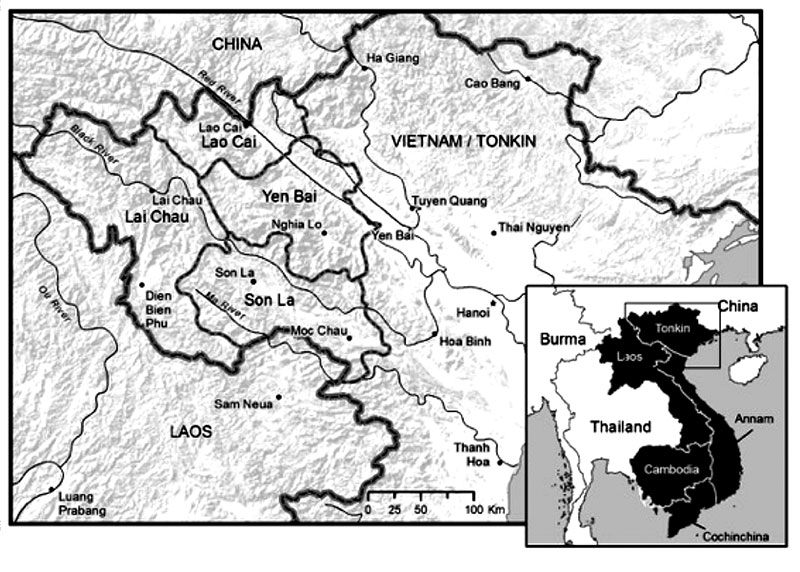page
Contested Territory: America’s Role in Southeast Asia, 1945–75

A National Endowment for the Humanities Summer Institute for K–12 Educators
July 16–27, 2018 at the National Humanities Center
OVERVIEW BIOGRAPHIES READING LIST PARTICIPANTS Teaching Resources
What do we think of when we think of Vietnam? For many, Vietnam was and remains a war that haunts veterans, families, and politicians. But to think only of the “Vietnam War” overlooks a country and its story. In fact, many Vietnamese wonder why Americans are so preoccupied with the “American War”!

This NEH Summer Institute will explore modern Vietnam in order to situate the American War in broader spatial settings and longer historical contexts. Vietnam’s landscapes range from forests, over mountains, through fields, and downstream to river deltas. Vietnamese lives move from village to city, meander through cafes and rice paddies, cross oceans and land again. Many people called “Vietnamese” today did not even speak the national language until deep into the twentieth century.
This institute aims to introduce a fascinating place rich in history and to animate a geographic and historical perspective among participants. Based on a course developed by Christian C. Lentz from the University of North Carolina at Chapel Hill with assistance from the Carolina Asia Center, the institute offers teachers a chance to learn from Lentz and other scholar-experts about Vietnam and how to teach its history and geography.
Overview

In the mid-twentieth century, Vietnam was fiercely contested on the ground and in the realm of ideas. In the aftermath of World War II, the country experienced no fewer than three wars, each of which pitted foreign powers (France, U.S., China) against Vietnam and Vietnamese against Vietnamese. Known by scholars as the Indochina Wars, the first two conflicts—between 1946–1954 and 1960–1975—were as much civil wars as wars against foreign domination. Understanding the reasons for foreign intervention, then, requires thinking carefully about the visions of Vietnam that motivated people to take up arms and, relatedly, to embrace one vision over another. Whether Vietnam would be divided or unified, communist or capitalist, national or transnational were questions that drove historic debates. They also sparked conflicts that, in many ways, continue into the present.
Inspired by cutting-edge scholarship, the institute offers fresh insight into a country all too often viewed from the perspective of American interests and experiences. The theme and title are based on a book by Christian C. Lentz forthcoming in 2019 from Yale University Press. Based on archival and ethnographic research, Contested Territory: Dien Bien Phu and the Making of Northwest Vietnam excavates the hidden history of a world-historic place and tells a new story about nationalism, territory, and state formation. It views Vietnam from the perspective of a historic borderland where an epic battle in 1954 ended French colonial rule. Doing so opens new vistas on the country’s cultural and ethnic diversity, varied environments and agriculture, as well as rich traditions and everyday customs. The approach cuts a clear path through conventional, yet still contested, representations of war, nation, and memory. Further, it reframes the American intervention as but one of many contests in and over Vietnam.
Led by scholars with a wide range of disciplinary expertise, the institute builds an inter-disciplinary understanding of a place rich in history. It also engages teachers with a past still very much relevant to our present.
Contested Territory: America’s Involvement in Southeast Asia, 1945–1975 explores worlds transformed through radical social change and the tense relations it produced. The full value of this work, though, is the way in which we will consistently set it against the current dominant understanding of why and how America arrived in Vietnam during the Truman administration. While on the surface this expanded timeline might seem localized and outside of the margins of secondary level curriculum, our goal is to explore and counterbalance the linear narrative that most teachers follow of Kennedy, Johnson, Tet, Nixon and the fall of Saigon. Only through this immersive understanding of the complex human and cultural geography of southeast Asia can teachers begin to lead students on an investigation of the cause and effect of the global dynamic—and to have humanities-based resources and materials available to draw evidentiary conclusions.
Any views, findings, conclusions or recommendations expressed in this website do not necessarily represent those of the National Endowment for the Humanities.